ABOUT PLACE: An Interview with Postcommodity
Crystal Migwans
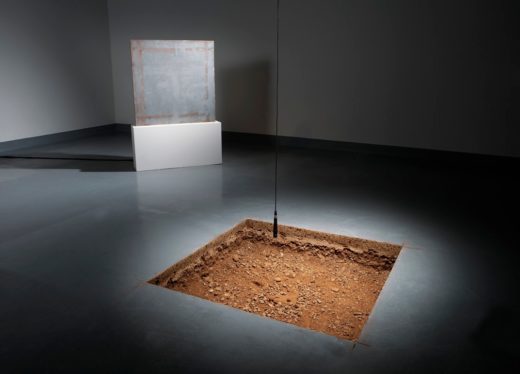 Do You Remember When? Tempe, AZ. 2009. Site-specific intervention and mixedmedia installation (cut concrete, exposed earth, light, sound). Installation view, Arizona State University Art Museum, Ceramics Research Center, Tempe, AZ. Image by Postcommodity, courtesy of Postcommodity.
Do You Remember When? Tempe, AZ. 2009. Site-specific intervention and mixedmedia installation (cut concrete, exposed earth, light, sound). Installation view, Arizona State University Art Museum, Ceramics Research Center, Tempe, AZ. Image by Postcommodity, courtesy of Postcommodity.
Postcommodity is Kade S. Twist, Raven Chacon, and Cristobal Martinez (founding members include Steven Yazzie and Nathan Young). The collective formed in 2007 around the idea of a large-scale, bi-national artwork that could somehow bridge the US-Mexico border. For four days in October 2015, this idea was realized in Repellent Fence. It consisted of massive yellow balloons with “scare eye” designs—thirteen on the American side (in the town of Douglas) and thirteen on the Mexican side (in Agua Prieta)—arranged in an aerial “fence” intersecting the slatted metal fence below. The balloons were large-scale versions of the Bird-B-Gone or “scare eye” product found in garden stores: yellow globes with red-blue-black irises meant to repel wildlife by mimicking predator markings. In their four-color design and four-direction gaze, however, Postcommodity saw parallels with Indigenous designs and concepts.
As a barrier, the balloon-fence was a deliberate mockery: clearly ephemeral and utterly porous. And instead of repelling, it attracted activity, becoming a locus for building collaboration and local arts infrastructure in the two sister towns. Indigenous curator Candice Hopkins in her address at the opening event referred to Repellent Fence as a suture across a cut land. In this sense, the piece was a healing of place. In another very visceral sense, it was the invocation of place as a surveilling presence, reminding us that land, like walls, has ears and eyes.
Other works by Postcommodity similarly address the politics of place-making at transitional sites. Underlying each is a critique of a colonial frame—map, gallery, border. Its 2009 installation Do You Remember When was a literal breaking-open of the gallery floor to expose the earth beneath, symbolically revealing that the Arizona State Museum Art Gallery was built atop tribal lands. A microphone suspended over the neat rectangular opening pointed to the land as a speaking agent, adding its voice to the Pee Posh social dance song playing in the background. The hole in this way “becomes a spiritual, cultural, and physical portal—a point of transformation between worlds.” Postcommodity repeated this intervention at the 13th Sydney Biennale in 2012, with recordings made by local Aboriginal peoples specific to that place.
People of Good Will (2014-16) in Guelph, Canada, can be considered the northern counterpart of Repellent Fence. It too was grounded in a sustained connection and collaboration with a local community, and it too addressed cross-border movements. Instead of producing a single installation, Postcommodity collaborated with the Guelph Black Heritage Society to curate a year of arts programming at Heritage Hall, a former church built by people who had escaped slavery through the Underground Railroad.
This wider project came about through research for the multimedia work Game Remains, which the Musagetes Foundation commissioned from Postcommodity in 2013. Game Remains critiqued the analytic process through which Guelph city planning mapped new immigrants into the city based on their projected roles as consumers. Over the course of the People of Good Will collaboration, Postcommodity reimagined this city development process through a “ceremonial filter.” It became a live, collaborative composition of a piece of music, a way to “collectively imagine and sonify a more desirable future.” A map of Guelph was projected in the middle of the room, with quilt blocks the size of city blocks floating through. Each of the groups of local citizens involved recorded sound samples specific to their experience of the Guelph landscape, which players of the game could mix and meld by arranging the quilt blocks. The quilt block motifs held special resonance in connection to their material referents hanging on the walls of Heritage Hall, for tradition holds that the quilts were maps for leading escaped slaves across the land.
The result of the People of Good Will project was a renovated Heritage Hall and a practical platform for arts-based organizing by artists of color in the city. This capacity-building, says Postcommodity, is the kind of transformation that underlies their practice of art making as ceremony.
I spoke with the members of Postcommodity by phone about inventions in place, interventions in discourse, and the afterlife of their cross-border actions. This interview consists of several conversations over one week in October 2016.
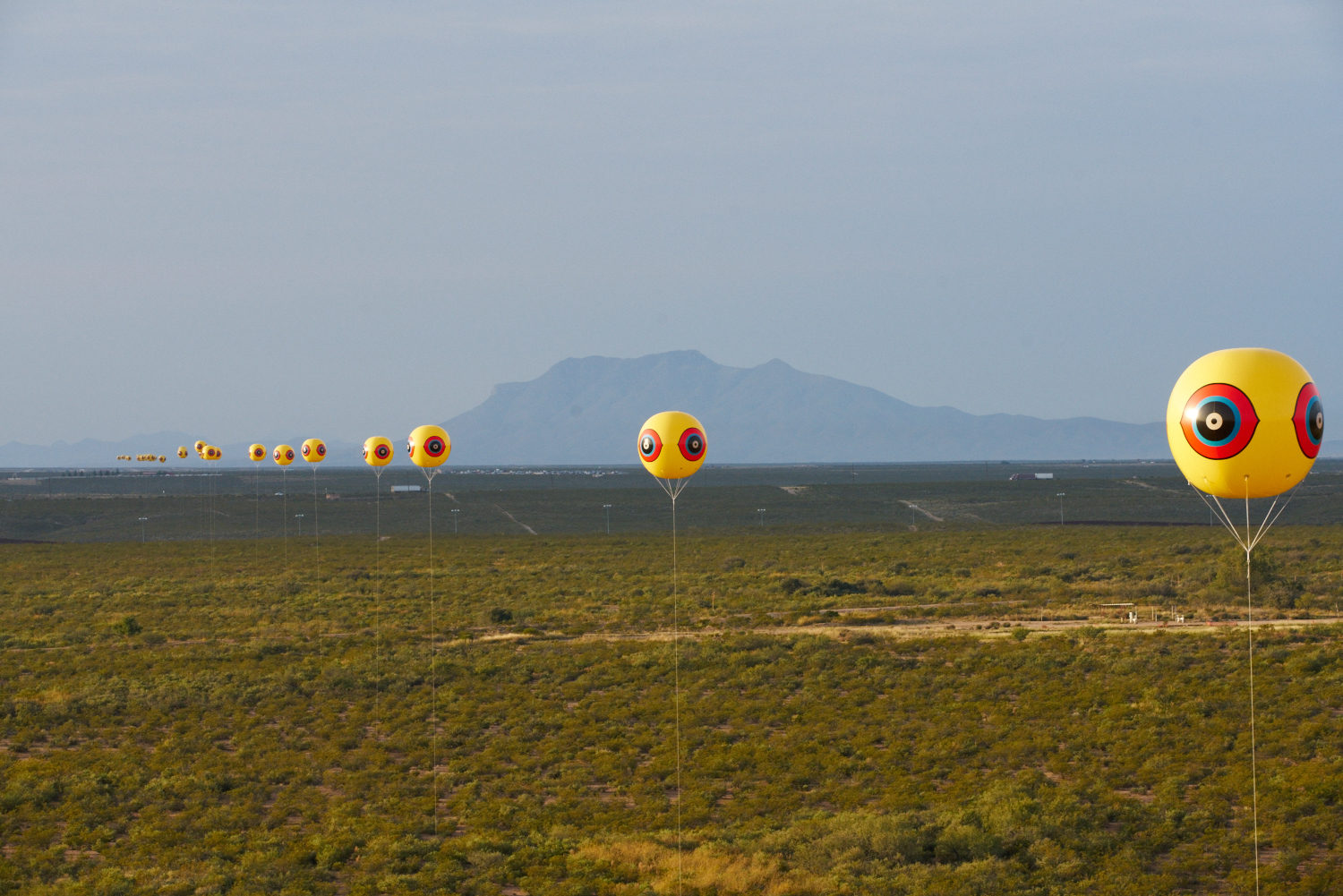
Site-specific installation, view from the air. Image by Michael Lindgren, courtesy of Postcommodity.
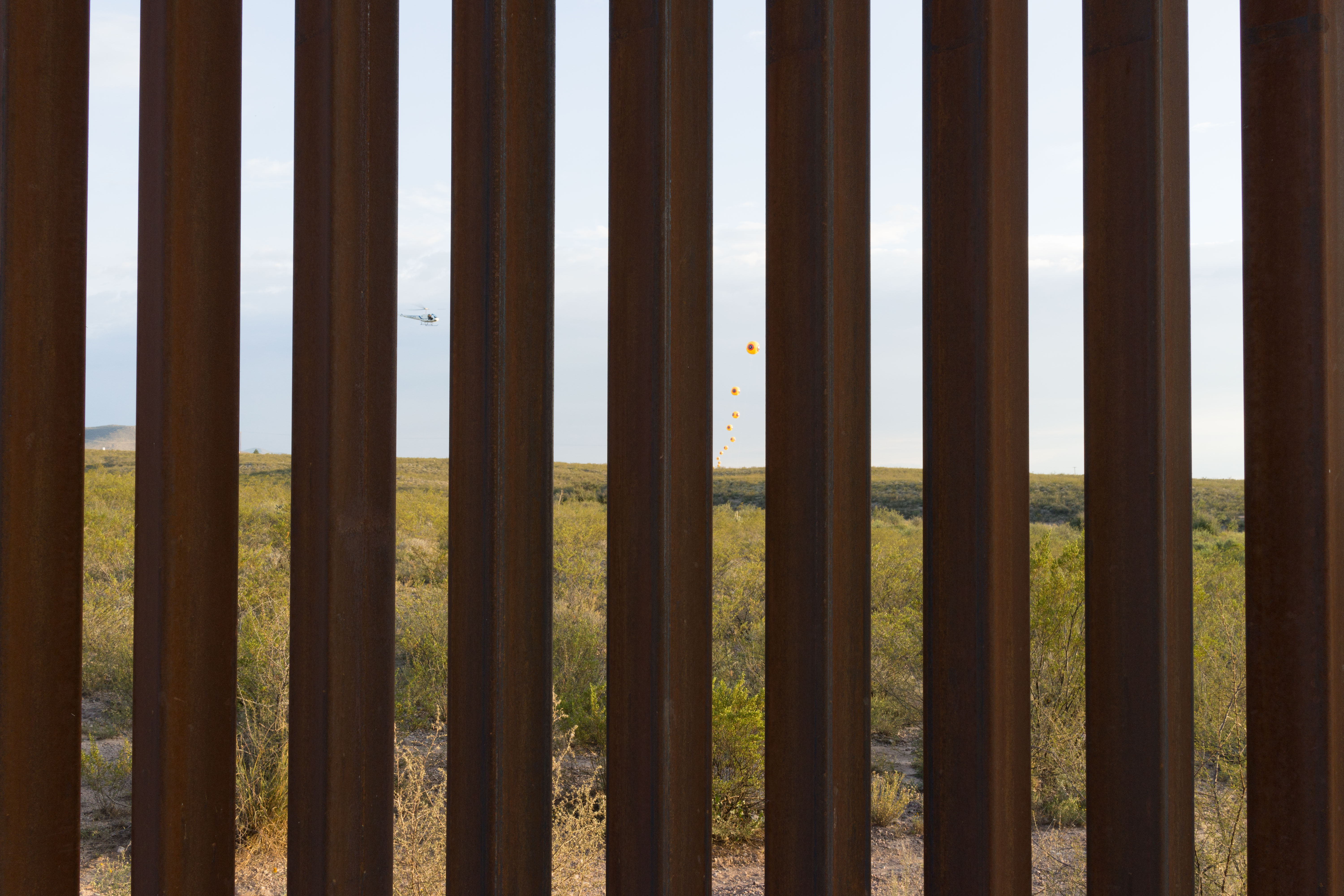
Site-specific installation, view from one side of the border fence. Image by David Taylor, courtesy of Postcommodity.
KADE S. TWIST: In my own practice, I’m driven by the word. That’s how I do my thinking. These are conceptual frameworks I like to hack. In the descriptions I’ve helped to produce, I think I’ve been strategic and irreverent, playing with critical theory and social theory in a way that makes room for Indian discourse. It’s strategic because it’s the easiest way to communicate with curators and writers and thinkers. It helps us connect. I don’t think Postcommodity would be what it is without that intellectual rigor. A lot of artwork from people of color . . . I think there’s an inclination to dismiss their intellectual contribution if they’re not already grounded in theory. Engaging with that provides us with a handle, while allowing us to disrobe the field. We could be guilty of overuse, and I have gotten a lot of pushback on it, but it’s so essential to be able to use this as Indian people. If you’re not positioning yourself, the colonizer will position you. And if you look at our CVs, we’re in the biennials, the conceptual things. Not in the “identity” shows. Or “multicultural” shows. More about art and ecology. Place-based practices. It’s about how you mediate land, culture, community.
RAIL: As a name, “Postcommodity” seems to carry some heavy critical weight, especially when used in place of an artist or author. Can you talk a bit about that?
RAVEN CHACON: There’s also a little bit of a pun or wordplay in that, if you’re familiar with commodities in [reservation communities in] the United States. You go to the chapter house or tribal office, [“the post,”] or if you’re an urban Native you go to the warehouse. There’ll be butter, powdered milk, cheese, baloney, and rice—all commodities, but it’s the black-and-white-labeled stuff! I thought that was a great Indian pun: a “post” commodity.
CRISTOBAL MARTINEZ: Those commodities are the outcome of treaties, where the government was to provide a certain amount of food to Native communities. It’s how communities survived when they were sequestered on reservations. White food coming from white people. Literally white! Enriched white flour, rice, sugar, lard . . . very unhealthy. In part, they’re implicated in the epidemic of diabetes. The idea behind Postcommodity, for me, is a future where Indigenous people are no longer dependent on these things. No longer contained. Where people are no longer judged by their ability or capacity
to consume.
RAIL: So it’s about a future-oriented instead of past-oriented Indigeneity.
MARTINEZ: Yeah! Indigenous futurism. Sometimes pessimistic, sometimes optimistic. Maybe not always that beautiful. But always, I think, pragmatic.
TWIST: The idea is to move beyond the commodity; beyond those relationships initiated by a paternalistic entity. Commodities are one ephemera of that relationship. Think about the evolution of diabetes—think about the supplanting of Indigenous diets with non-Indigenous diets. And there’s another sense to Postcommodity that comes out of cultural anthropology. It’s a term used to describe the psycho-social relationships that consumers have with products they consume. How human relations with objects exceed their use. It’s transformative. We wanted to inject that—to acknowledge the emotional relationship between consumers and products, which is transformative, whether that be good, bad, or indifferent.
RAIL: It seems to lend itself well to a kind of visual pun, especially in Repellent Fence with that readymade, that balloon that you “made Indigenous.”
TWIST: It’s interesting because that piece was thought up when the name was thought up, within a couple weeks of each other. We were brainstorming about the name . . . and actually, it was my wife who thought of it, Andrea Hanley. She had worked at the NMAI (National Museum of the American Indian), and now works at the Museum of Contemporary Native Art. She was part of this early 1990s conversation [about the commodification of Native art], one that NMAI was really forging in the United States. Gerald McMaster was a big part of that. Then we had a chance to work with him at the biennial in Sydney, so that relationship went full circle. He was a mentor to my wife, and then he was a mentor to Postcommodity. [Andrea] also bought the first scare balloon that I ever saw! We had a fig tree being overrun by birds every summer, and she bought one to scare them away.
RAIL: Did it work?
TWIST: No! Maybe for a day, but not after that! (laughing)
CHACON: I think a big part of the name choice was related to how much Native art gets steered into a market. And that you’re not seen as making “art” at all. No matter what the object, no matter when the object, it’s craft, and it’s surely for decoration. They think of Native art objects as different types of vessels, and they’re not recognized as the vessels for ideas that they are.
RAIL: Is that something you’re trying to get away from, Native art that can be bought and sold?
CHACON: Well it’s something that happened naturally. Our medium is the moving image and immersive environments that aren’t objects on a plinth in a room; they are the room. Or the situation becomes the piece. Or videos. Durational, re-imagined ceremonies. The duration of four days, as happened with Repellent Fence—that’s the piece! There are objects that make it up, but the piece is that: four days.
RAIL: What happened with that piece, Repellent Fence, after its duration ended? It’s been one year since installation—what is the afterlife of that piece?
MARTINEZ: One way that I like to talk about the work, is to say that those four days are like four days of ceremony. In order to prepare for four days of ceremony, it took eight years of bi-national diplomacy and dialogue. The purpose wasn’t to put something in the land that would be permanent, the way the border wall is. What happens after ceremony is that there’s a transformation process, and the balloons are a tool for enacting that transformation. After ceremony the tool goes away, and things have changed.
TWIST: The afterlife of the piece is memory. It’s story, oral tradition, and it’s within the communities that hosted it, Agua Prieta and Douglas. It’s still part of the public imagination there.
CHACON: Even before we showed up, the two mayors had been trying in every way to keep trade going, to connect people who are separated by this wall. They had a memorandum of understanding. What we contributed with Repellent Fence was recognizing that both these towns already had very strong arts communities. And using that piece to bridge those communities through our collaborative work. We encouraged some artists to do a bi-national art walk, where they have artworks from each side [of the border], exhibited on the other side. We were able to link everybody together, through (what can be seen as) this absurd project! If that could be done—to fly two miles of giant balloons—then maybe an art exhibition every month isn’t so hard to foresee.
RAIL: So you’re showing people what’s possible, with balloons. They’re a beacon as well as an eye.
TWIST: That exemplifies what the project was about. It becomes a benchmark for ways of thinking about cross-border collaboration, that supports social policy objectives. Can we create a benchmark for bi-national art discourse? Can we create a narrative that helps people understand the benchmark? Can we create a metaphor that can hold the narrative and the benchmark together? That was always the goal. I think all three of those things would be necessary to operationalizing that memorandum of understanding.
RAIL: The other thing I was interested in talking about is your collaborative project across that northern border with People of Good Will, which addresses the immigrant experience in Guelph, Canada. What’s the relation between those cross-border projects, and where does the media installation Game Remains fit?
MARTINEZ: For us, Repellent Fence and People of Good Will are like kin. Two projects, two borders. They both complicate the public immigration discourse. We had been invited by Musagetes Foundation in Guelph, a group with a very strong mission to support social practice art, to create Game Remains, an interactive musical instrument. Then they said, what if we funded you for two years to do a project here in Guelph? To have an extended duration like this is great. We are very critical of social practice art in general—it’s a colonial model, very paramilitary, to parachute artists into a community for two weeks and then leave the community holding the bag. But with two years, we can get to know the community; we can help foster self-determination in the arts.
CHACON: Game Remains was attempting to address how Guelph’s city planning was just looking at these immigrants as potential consumers. We had a budget to do this, and the Guelph Black Heritage Society were restoring a church built by slaves who had come through the Underground Railway. It had become this safe house. They had bought the building, and needed to renovate it, though they still didn’t know what they wanted to do with it. We approached them and said, very simply: this story is amazing. You want to keep this sacred building going. We want to help you renovate this building, in exchange for putting on some public programming in the space.
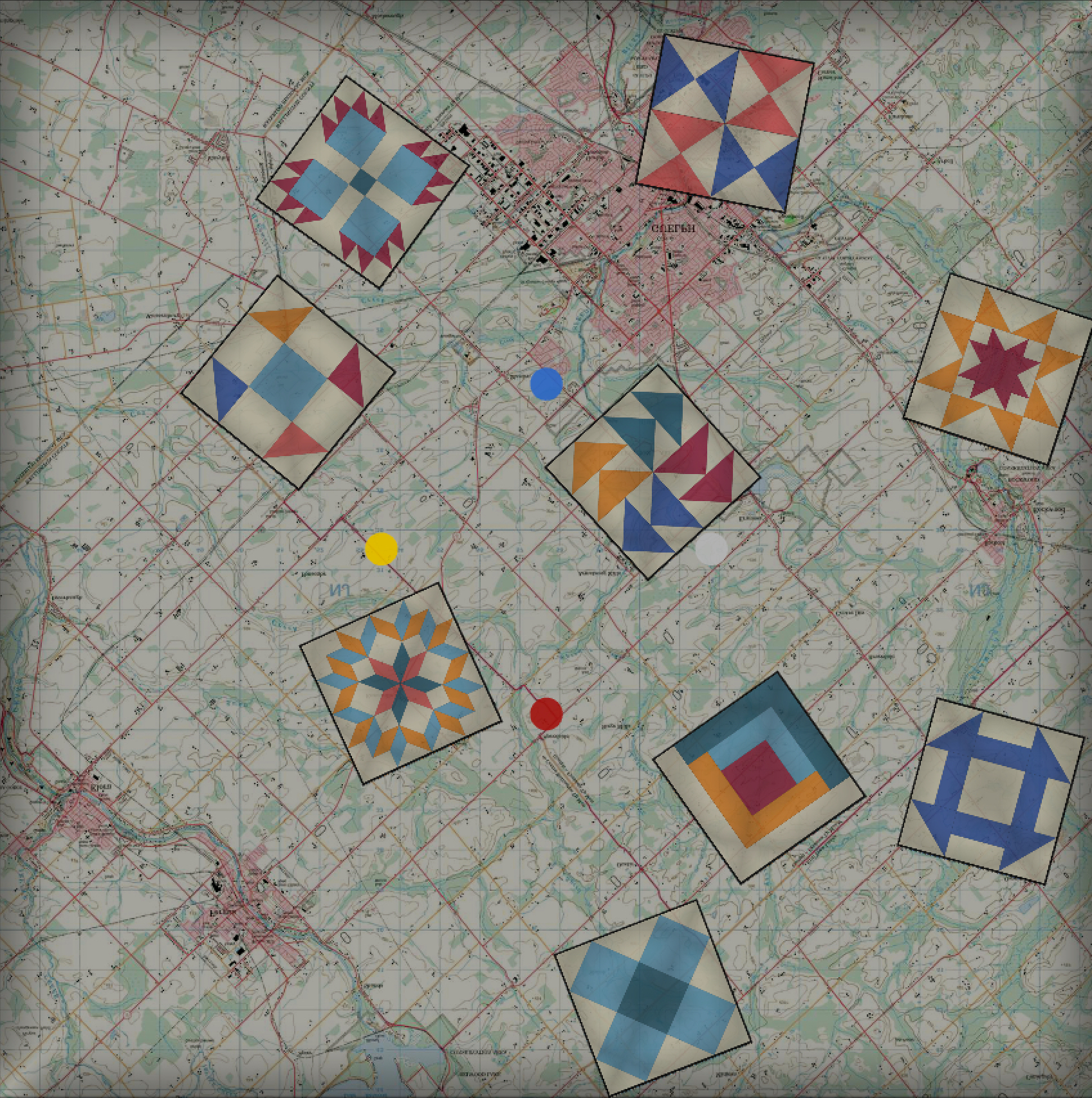
Game Remains. Guelph, Canada. 2013. Generative sound performance, installation and socially engaged collaboration. Screen capture by Postcommodity, courtesy of Postcommodity.
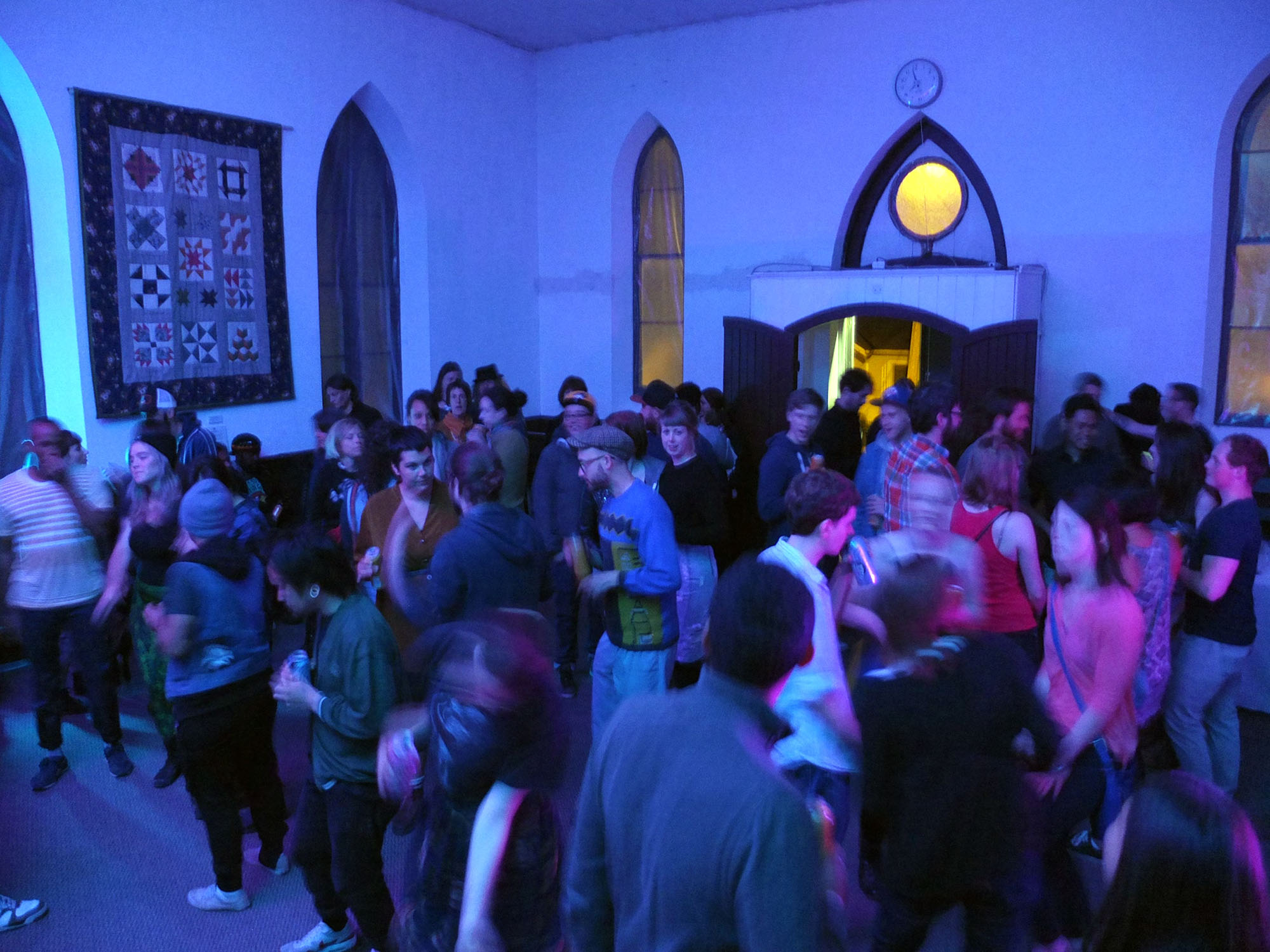
People of Good Will. Guelph, Canada. 2014 – 2015. Collaboration with the Guelph Black Heritage Society. View inside Heritage Hall during event, with quilt referenced in Game Remains. Image by
Postcommodity, courtesy of Postcommodity.
CHACON: That’s what the People of Good Will project was about. Finding artists of color, artists of immigrant descent, young people, to program events in Guelph. At the same time we were leveraging the budget we had to be able to turn a functioning venue over to the Guelph Black Heritage Society at the end. We bought a PA system and lights . . . so that they could continue on after our budget was done.
RAIL: A capacity-building project, then?
CHACON: Yes! Very much. Just leveraging funds, and being able to turn it into a project in and of itself. And it was great for us too. It’s funny for us to go over there, where we’re immigrants too. (laughing)
RAIL: Yes! Well, we’re all very cosmopolitan, Indians. We get around.
CHACON: Yeah, of course (laughing).
TWIST: That’s part of the DNA of the collective too. It was really pragmatic how we came together. It was to develop a peer-to-peer mentoring group that was project-based and truly interdisciplinary. This is not just about “you do part A and you do part B, and we’ll snap it together.” No; if you know part A and I don’t, then sit down with me and show me how it works. We’re always collecting gear, always building our collective ability to do projects, leveraging time and expertise in ways that individual artists can’t. When we think about the DNA of Postcommodity and what we can share, one of the goals is capacity-building.
Crystal Migwans is a curator and PhD student at Columbia University










